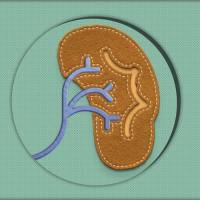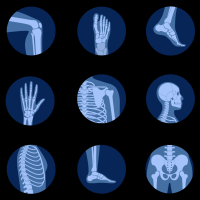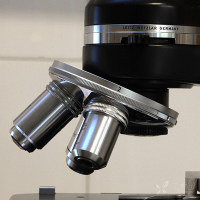【资源】假病毒技术资料(申请加分)
对于一些传染性很强的病毒,如SARS冠状病毒,埃博拉病毒,人免疫缺陷病毒,流感病毒等用传统的研究手段将面临着危险性高,周期长,对实验条件要求苛刻,需要生物安全III级实验室等问题[5]。在这种烈性传染病面前,假病毒技术将会是一种非常有效的研究手段。由于假病毒的亲噬性和感染过程与真病毒相同,因此可以模拟病毒感染的早期过程,而且假病毒内携带有报告基因(荧光素酶,Lac Z等),可以快速、方便的进行各种检测和分析,因此假病毒不仅可以用来研究病毒与宿主细胞的关系,克隆病毒的受体,更重要的是可以用于筛选抗病毒药物、评价疫苗免疫的效果等[6]。此外,与具有感染性的活病毒相比,利用假病毒进行试验研究安全性较高,这有助于防止高致病性或高度传染性的病毒从实验室传播出来。假病毒模式已经被广泛应用于艾滋病病毒的研究中。
目前国外已经建立了一系列以反转录病毒为载体构建的假病毒体系,如人免疫缺陷病毒(HIV)[7~10],水泡性口炎病毒[11~14],埃博拉病毒[15~19],SARS-CoV[20-23],流感病毒[24,25],丙型肝炎病毒[26~32]等。
我们在研究高致病性禽流感病毒时也利用从国外引进的假病毒构建体系,在克隆了禽流感病毒血凝素糖蛋白的基础上,成功构建了禽流感病毒和鼠白血病病毒的假病毒体系,为研究我国最近流行的高致病性禽流感病毒侵入细胞的机理及其受体提供了一种良好的工具。
参 考 文 献
[1] Dimiter S.D. Virus entry: molecular mechanisms and biomedical applications. Nature Reviews Microbiology, 2004, 2:109-122.
[2] Dimiter S.D. Cell Biology of Virus Entry .Cell, 2000, 101(23): 697-702.
[3] Mazurenko N.P., Merekalova Z.I., Jakovleva L.S., et al. Virus-viral co-cancerogenesis and the other viral interactions. Arch Geschwulstforsch, 1980, 50(5):399-407.
[4] John A.G. Briggs, Thomas W.,Stephen D.F. Do lipid rafts mediate virus assembly and pseudotyping? J.Gen.Virol.2003, 84:757-768.
[5] 段永翔. 微生物实验室生物安全问题. 现代预防医学,2004,31(5):658-660.
[6] David A.S. No false start for novel pseudotyped vectors. Current Opinion in Biotechnology 2002, 13:437-442.
[7] Barbara S.S., Jorn S., Valerie B., et al. Pseudotyping of murine leukemia virus with the envelope glycoproteins of HIV generates a retroviral vector with specificity of infection for CD4-expressing cells. PNAS.1997, 94:8640-8645.
[8] Ursula N., Barbara S.S. Replacement of the murine leukemia virus (MLV) envelope gene with a truncated HIV envelope gene in MLV generates a virus with impaired replication capacity. Virology, 2003, 315:209-216.
[9] Fabrizio M., Francesca S., Stefano I., et al. Truncation of the Human Immunodeficiency Virus Type 1 Envelope Glycoprotein Allows Efficient Pseudotyping of Moloney Murine Leukemia Virus Particles and Gene Transfer into CD41 Cells. J. Virol.1997, 4:3341-3345.
[10] Attila B., Peter E., Judit S., et al. Pseudotypes of Vesicular Stomatitis Virus-Bearing Envelope Antigens of Certain HIV-1 Strains Permissively Infect Human Syncytiotrophoblasts Cultured In Vitro: Implications for In Vivo Infection of Syncytiotrophoblasts by Cell-Free HIV-1. Journal of Medical Virology, 2001, 64:387-397.
[11] Steven R. Bartz, Marie A. Vodicka. Production of High-Titer Human Immunodeficiency Virus Type 1 Pseudotyped with Vesicular Stomatitis Virus Glycoprotein. Methods: A Companion to Methods in Enzymology, 1997, 12:337–342.
[12] H.F. Gallardo, C. Tan, D. Ory, et al. Recombinant Retroviruses Pseudotyped With the Vesicular Stomatitis Virus G Glycoprotein Mediate Both Stable Gene Transfer and Pseudotransduction in Human Peripheral Blood Lymphocytes. Blood, 1997, 90(3):952-957.
[13] J.C. Burns, T. Friedmann, W. Driever, et al. Vesicular Stomatitis Virus G Glycoprotein Pseudotyped Retroviral Vectors: Concentration to Very High Titer and Efficient Gene Transfer into Mammalian and Nonmammalian Cells.PNAS.1993, 90(17):8033-8037.
[14] Jacques Galipeau, Hewei Li, Andre´ Paquin, et al. Vesicular Stomatitis Virus G Pseudotyped Retrovector Mediates Effective in Vivo Suicide Gene Delivery in Experimental Brain Cancer. Cancer Research, 1999, 59:2384–2394.
[15] Rouven J. Wool-Lewis, Paul Bates. Characterization of Ebola Virus Entry by Using Pseudotyped Viruses: Identification of Receptor-Deficient Cell Lines. J. Virol.1998, 72(4):3155–3160.
[16] Stephen Y. Chan, Roberto F. Speck, Melissa C. Ma, et al. Distinct Mechanisms of Entry by Envelope Glycoproteins of Marburg and Ebola (Zaire) Viruses. J. Virol.2000, 74(10):4933–4937.
[17] Hiroshi Ito, Shinji Watanabe, Ayato Takada, et al. Ebola Virus Glycoprotein: Proteolytic Processing, Acylation, Cell Tropism, and Detection of Neutralizing Antibodies. J. Virol.2001, 75(3):1576–1580.
[18] Hiroshi Ito, Shinji Watanabe, Anthony Sanchez, et al. Mutational Analysis of the Putative Fusion Domain of Ebola Virus Glycoprotein. J. Virol.1999, 73(10):8907–8912.
[19] Akihito Y., Marielle C., Warner C. G. Studies of Ebola Virus Glycoprotein-Mediated Entry and Fusion by Using Pseudotyped Human Immunodeficiency Virus Type 1 Virions: Involvement of Cytoskeletal Proteins and Enhancement by Tumor Necrosis Factor Alpha. J. Virol.2005, 2:918–926.
[20] Zhi-Yong Yang, Yue Huang, Lakshmanan Ganesh, et al. pH-Dependent Entry of Severe Acute Respiratory Syndrome Coronavirus Is Mediated by the Spike Glycoprotein and Enhanced by Dendritic Cell Transfer through DC-SIGN. J. Virol.2004, 78(11):5642–5650.
[21] Tsanan G., Jindrich C., Holger R., et al. Retroviral Vectors Pseudotyped with Severe Acute Respiratory Syndrome Coronavirus S Protein. J. Virol.2004, 78(17):9007–9015.
[22] Michael J. Moore, Tatyana Dorfman, Wenhui Li, et al. Retroviruses Pseudotyped with the Severe Acute Respiratory Syndrome Coronavirus Spike Protein Efficiently Infect Cells Expressing Angiotensin-Converting Enzyme 2. J. Virol.2004, 78(19):10628–10635.
[23] Heike Hofmann, Kim Hattermann, Andrea Marzi, et al. S Protein of Severe Acute Respiratory Syndrome-Associated Coronavirus Mediates Entry into Hepatoma Cell Lines and Is Targeted by Neutralizing Antibodies in Infected Patients. J. Virol.2004, 78(12):6134–6142.
[24] Theodora H., Sandrine V. W., Stephen J. R., et al. Incorporation of Fowl Plague Virus Hemagglutinin into Murine Leukemia Virus Particles and Analysis of the Infectivity of the Pseudotyped Retroviruses. J. Virol.1998, 72(6):5313–5317.
[25] Amy H. Lin, Paula M. Cannon. Use of pseudotyped retroviral vectors to analyze the receptor-binding pocket of hemagglutinin from a pathogenic avian influenza A virus (H7 subtype). Virus Research, 2002, 83:43–56.
[26] Mike Flint, Carine Logvinoff, Charles M. Rice, et al. Characterization of Infectious Retroviral Pseudotype Particles Bearing Hepatitis C Virus Glycoproteins. J.Virol.2004, 78(13):6875–6882.
[27] Kazushi Tamura, Atsushi Oue, Atsushi Tanaka, et al. Efficient formation of vesicular stomatitis virus pseudotypes bearing the native forms of hepatitis C virus envelope proteins detected after sonication. Microbes and Infection, 2005, 7:29–40.
[28] Keith Meyer, Arnab Basu, Ranjit Ray. Functional Features of Hepatitis C Virus Glycoproteins for Pseudotype Virus Entry into Mammalian Cells. Virology, 2000, 276:214-226.
[29] Mayla Hsu, Jie Zhang, Mike Flint, et al. Hepatitis C virus glycoproteins mediate pH-dependent cell entry of pseudotyped retroviral particles.PNAS,2003,100 (12): 7271-7276.
[30] Aki Kaimori,Tatsuya Kanto,Chang Kwang Limn, et al. Pseudotype hepatitis C virus enters immature myeloid dendritic cells through the interaction with lectin.Virology,2004,324:74–83.
[31] Heidi E. Drummer, Anne Maerz, Pantelis Poumbourios. Cell surface expression of functional hepatitis C virus E1 and E2 glycoproteins. FEBS Letters, 2003, 546:385-390.
[32] Yoshiharu Matsuura, Hideki Tani, Kensuke Suzuki, et al. Characterization of Pseudotype VSV Possessing HCV Envelope Proteins.Virology, 2001, 286:263-275.















































